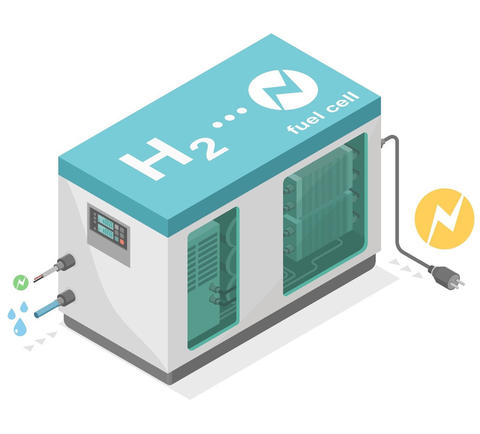Summary
No existing hydrogen storage material satisfies the Department of Energy (DoE) goal of achieving a commercial hydrogen storage system for competitive hydrogen-powered transportation. Accelerating the development of such innovative materials requires a detailed understanding of elemental stoichiometry and the impurities that may enhance or detract from hydrogen storage capacities. Valuable test quantities require rapid chemical analysis, preferably by nondestructive techniques. Prompt gamma activation analysis (PGAA) and neutron activation analysis (NAA) are uniquely suitable for determining low-Z elements such as H, B, Mg, etc. Determining these elements by any other nondestructive techniques is neither trivial nor reliable. We are developing both PGAA and INAA procedures for accurate characterization of hydrogen storage materials.
Description

The hydrogen storage project targets metrologies that assess kinetics and energetics of hydrogen charging and discharging in combinatorial structures as well as the degradation mechanisms that limit life of use. New capabilities are being developed and several existing measurement capabilities are being extended. Principal among the latter will be the unique capabilities at the NIST Center for Neutron Research (NCNR), including work with the Physics Laboratory to extend existing capabilities for hydrogen imaging to the micrometer resolution level. MML's prompt-gamma activation analysis spectrometer at NCNR will be optimized for quantitative non-destructive hydrogen measurement. Rapid-evaluation capabilities in MML will be extended for the study of hydrogen adsorption/desorption using high-throughput combinatorial infrared emissivity- and bolometer-based measurement systems. Other new measurement tools include adaptation of infrared spectroscopy for combinatorial capabilities, Raman microbeam spectroscopy and in-situ microbeam synchrotron scattering. Targeted materials include magnesium-based and lithium-based systems, metal-doped carbon materials, and boron systems. The new metrological tools will enable the efficient search for novel hydrogen storage materials and provide a database of process and properties measurements essential for understanding the fundamentals of the hydrogen-solid state interaction in these media. Industrial partners will be used to ensure applicability of methodologies for materials development.
The effort will also develop and assess models that address the kinetics and energetics of hydrogen charging/discharging as well as media poisoning, building on predictive models in NCNR and MML for hydrogen storage at densities needed for Freedom Car goals. This will take advantage of existing strengths in MML in both thermodynamics and kinetics of metal alloys for hydrogen storage. It will also emphasize understanding and further development of models originated by NCNR staff for metal-doped carbon-based materials. Model development and application will utilize MML capabilities as well as NCNR's own staff and state-of-the-art computational facility.
Major Accomplishments
- Constructed major components for the new PGAA instrument
- Improved hydrogen background in existing PGAA system by 40%
- Analyzed first combinatorial samples
ASSOCIATED PUBLICATIONS
- Zeisler, R., Oflaz, R., Paul, R. L., and Fagan, J. A., "Use of neutron activation analysis for the characterization of single-wall carbon nanotube materials," Journal of Radioanalytical and Nuclear Chemistry, 291, 561-567 (2012).
- Paul, R. L., Cao, L., "Characterization of Materials for a Hydrogen-Based Economy by Cold Neutron Prompt Gamma-ray Activation Analysis," in The Hydrogen Economy, edited by B. Choudhury, A. Dillon, J. Keller, C. Moen (Mater. Res. Soc. Symp. Proc. Volume 1098E, Warrendale, PA, 2008.
- Paul, R. L., "Measurement of Hydrogen in Advanced Materials by Cold Neutron Prompt Gamma-ray Activation Analysis", in Hydrogen in Matter, AIP Conference Proceedings Vol. 837, ed. G. R. Myneni, Bjorgvin Hjorvarsson, American Institute of Physics, Melville, New York, 2006 , 223-229.

